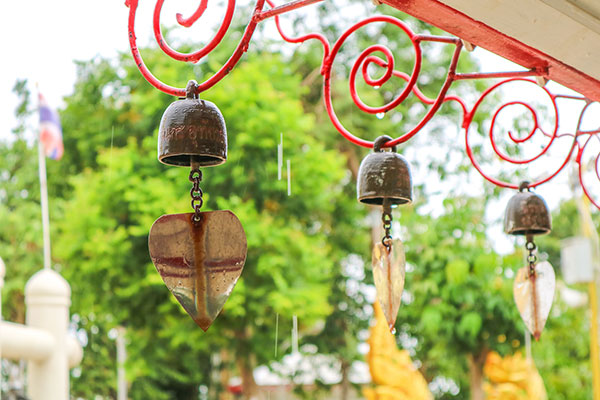The main program consists of three audio MP3 tracks. These audio tracks are created using brainwave-synchronization technology audio that speaks directly to your subconscious, to help you eliminate limiting beliefs.

You might ask what the color of your living room walls has to do with the way you feel.
Maybe a lot.
If you subscribe to the ancient art of Chinese placement,
the location of your bedroom and the chimes hanging on your
porch spell out your personal wellbeing.
Feng (wind or air) and shui (water) are the elements that are
considered to move around everything and which are basic to our survival.
The art is deep-seated in holistic practice and breaks everything down to its energetic value.
Chinese philosophy and wisdom and the practice of feng shui (pronounced fung shway) are tied closely together.
They espouse the idea that everything, both animate and inanimate, holds life force energies.
Proponents of feng shui encourage us to examine energy patterns to determine whether our
homes and objects are holding vibrant, thriving energy or blocking energy from
moving in the most desirable positive flow.
Masters of the art of feng shui use natural vital energies,
known as qi (pronounced chee in Western speech due to the Chinese system of sounds and lettering).
Generally, malevolent energy patterns are removed first then positive enhancing energy is used to replace them.
Mirrors, crystals, bells, wind chimes, rocks, statues, plants, flowers, aquariums, mobiles, and
water fountains are all part of the practitioner's arsenal of tools.
Color and placement of objects are also considered to create a
sense of balance and harmony in the living or working environment.
Ancient cultures were often led by shamans,
who were revered for their practice of divination by means of line and geography before setting up villages.
Gentle winds meant plentiful harvest, flowing springs meant abundant energy and energy meant survival.
Later, the practice was combined with astrology and the art of
feng shui—literally translated as 'wind and water'—became the art we know today.
The ancients believed that the earth and cosmos constitute one interwoven field of energy,
something quantum physicists agree with today. They wanted their local geography to be in
alignment with the electromagnetic energy grid of the earth,
believing it had a major effect on the energies that affected both humans and their dwellings.
Jagged objects like antennas or rocks should be countered with mirrors to reflect back the negative energy.
The same holds true if you must live near a cemetery, mortuary, hospital, police station, or prison.
Round objects such as stones, a gazebo or pond—even a round sand box or pool—can absorb wayward forces.
Winding roads bring positive qi because they act like rivers.
Forests mean growth and parks where children play mean youthful energy.
It teaches us how to be attentive to the energies that flow around us. These practical tips for designing your home around feng shui principles will bring better energy into your everyday environment.
The art of feng shui and the science of physics are in agreement with the way our universe acts upon us.
The bottom line, though, is that we feel more fluid and graceful when our lives are organized around its flow.
Take some time to assess your surroundings and make a few tweaks to your personal spaces.
Change is good when it means the sinuous elegance of the cosmos is acting on your behalf.